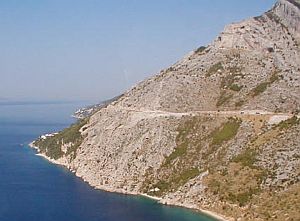Croatia's Topography, Nature & Climate
Croatia offers an amazing diversity of landscapes. As for example the plain of the Podravina, which is a part of the vast Pannonian plain, along the border to →Hungary in the north of Croatia, and the wide Sava valley. Next is the mountainous but not steep area of Slavonija (Slavonia) with almost 1,000 m high mountains and hills. The central part of Croatia is called Kordun and dominated by rolling hills. Another part is the large Istra (Istria) peninsula in the west, consisting of mountains along the east coast and a small plain along the west coast. The most dramatic landscape can be found in Dalmatia. There, the around 1,500 m high mountain ridge of the Dinaric Alps straddles the border to →Bosnia-Herzegovina. The entire area between Istria and the Dinaric Alps is characterized by limestone and therefore it offers a marvellous karst topography with numerous polye, dolina (large and small collapsed valleys), ponors (sinkholes, where rivers etc simply vanish), caves etc.

| ||
| Dalmatia: That's a steep coast and crystal clear water |
Definitely one of the most important reasons for the popularity of the country is the Dalmatian coast, featuring some 1,000 islands and islets. The crystal clear water of the Adriatic Sea, the islands and of course plenty of history and culture tempt millions of tourists every year. Neither →Bosnia & Herzegovina nor →Serbia can offer a long coastline, and so Croatia is destination No 1 for most of the visitors of the area. All the polye (valleys) and mountain ridges as well as the islands run parallel with each other from north-west to south-east. This is due to tectonical reasons. The entire coast is tectonically active, which means that there are occassional but devastating earthquakes.
The highest summit of Croatia is the 1,830 metres high Dinara - of course in the Dinaric Alps near the city of Knin. The topography as wells as the sea current define the climate of Croatia. The Dinaric Alps running parallel to the coastline protect the latter from cold winds coming from the north. Therefore, the winter at the seaside is rather short and mild. In contradiction to that, the north of the country can become very cold. The summer at the sea is hot and dry, but thanks to a constant onshore wind it appears to be a pleasant climate. Since the water of the Adriatic Sea flows northwards along the Dalmatian coast, the water temperature is quite high in summer and not really low in winter.
©2024 Europe-East.com

 Albania
Albania Croatia
Croatia